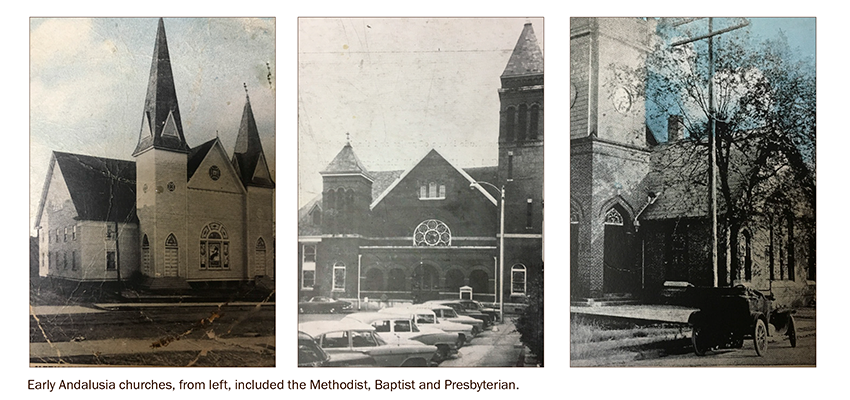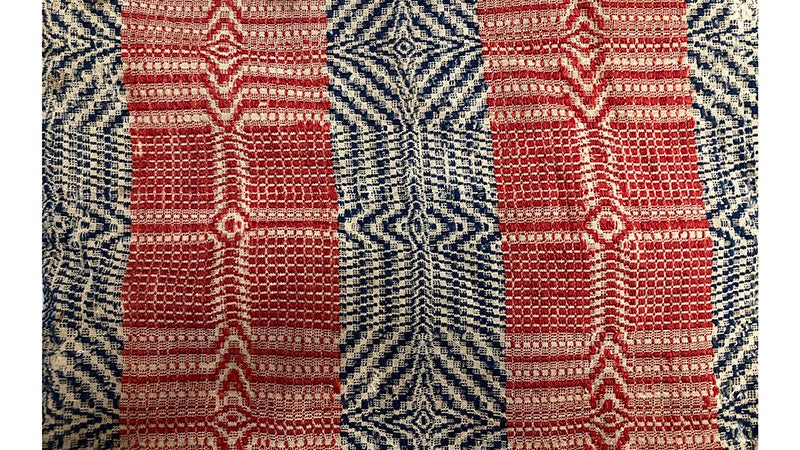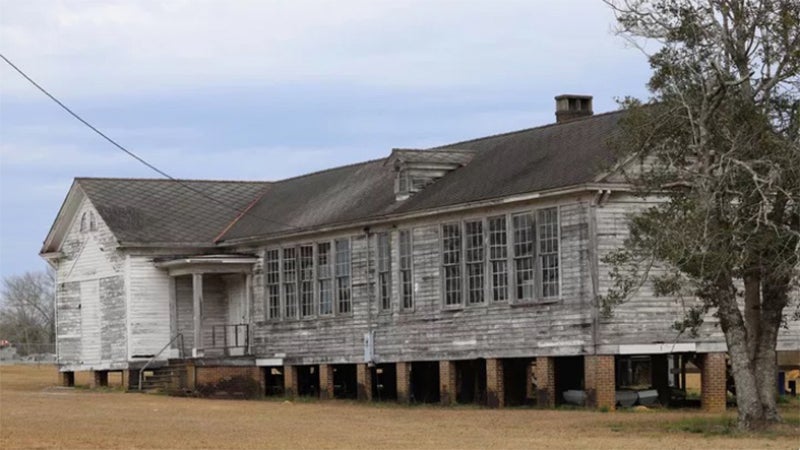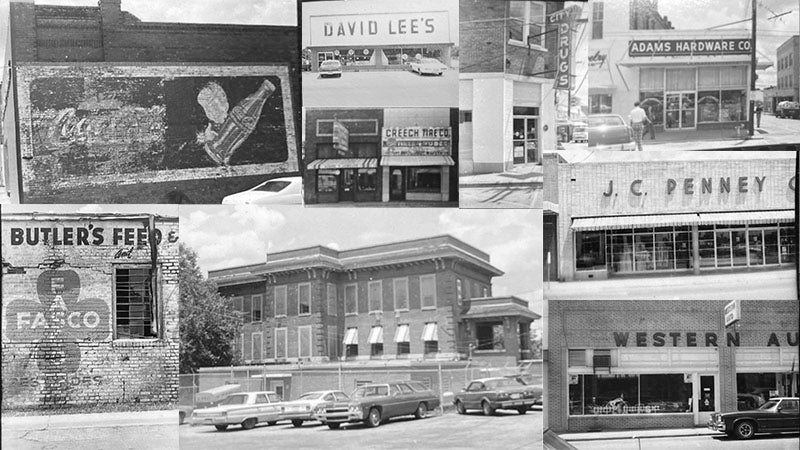Remember when: ‘Brethren, we have met to worship’
Published 1:45 am Saturday, February 17, 2018
Many of you readers may be familiar with the hymn “The Church’s One Foundation.” It was written in the 1860s by Samuel Stone of London. It is based on the 9th article of the “Twelve Articles of the Apostles’ Creed.” The hymn also served as an inspiration for Rudyard Kipling’s 1896 poem, “Hymn Before Action.” Some lyrics in the hymn, “the great church victorious,” remind us that there are truly some great churches in Covington County and Andalusia.
A typed text was discovered several years ago in the upstairs heritage room of the First Baptist Church. Its author at the time was unknown. Recently, I read in a late 1950s Andalusia Star- News that the Rev. John Jeffers presented a program to a ladies’ civic club on the history of Andalusia churches. So I presume that Jeffers wrote this account since it is titled, “History of Andalusia Churches.” Here are some highlights that I wish to share.
“The beginnings of organized religion in this area are shrouded in obscurity. There are, however, some scanty bits of information that give us some idea of these origins. “
“The Baptist church at the earliest settlement of the county was the prevailing denomination. There are some churches today that are still active that were organized in the early years of the county. Several of them have the original records which not only give information concerning the church organization, but also of the pioneer members. In the earliest days of the county, there was only one kind of Baptist church, but about 1839, there was a division in the church and several of those older churches are spoken of today as Primitive Baptist churches.”
“One of the oldest church associations was the Bethehem, an organization of Baptist churches. The association’s oldest preserved minutes were of September 25, 1824 at which time the association met with the Beulah Church in Conecuh County.”
Dr. L. W. Barton, FBC pastor from 1926-1930, wrote in his historical notes, “It is not possible to say at this writing whether the church was organized at Montezuma before the county seat was moved to this place or after the transfer of the town site was made. The probability is from the testimony of various persons about sundry events that the church was not organized until after the removal of the county seat to this place (1844).”
“The first building was erected at or near the place where the present building now stands some time before the Civil War. It was built by Henry Brewer as contractor at a cost of $400., according to Judge Salter’s memory. It had a Masonic Hall upstairs according to a common custom of the day. Judge Salter and C. W. Snowden remember how as lads they climbed a tree that stood near the building to try to spy on the Masons and had to ‘beat it’ when the Masons got after them.”
“Josiah Jones, grandfather of Judge Salter, along with Alexander Snowden, father of Mr. C. W. Snowden, Ransome Adams, and David Barrow were among the leading spirits in the erection of the old building. There may have been others, but these are definitely remembered. One opinion is that C. A. Stanley, known as Gus Stanley, gave the land for the church and the cemetery, but another one remembers that Gus Stanley was the county commissioner who might have secured the land as a gift from the county for the church cemetery.”
“The roll of membership in those early days is not available, and there is not means of knowing how many brave sons of the church went away to the battle fields of the sixties and gave their lives for the cause they loved.”
Incidents of the great sacrifices of early Alabama Baptist ministers have been remembered such as this one written by Jeffers in the 1950s.
“When the bridgeless streams were swollen, the dauntless missionary would strip himself bare, secure his clothing from the waters by holding them aloft with one hand, while with the other he would swim to the opposite side of the shore, redress himself, and go on his way rejoicing.”
“In the same period, Methodism was being introduced to this section as a mission project sponsored by the South Carolina Conference of the Methodist Church…No information concerning organized Methodist work is available prior to 1894. At that time the Methodists in this vicinity met here at the mission originally established by the South Carolina Conference which was in charge by W. T. Ellisor. Similar missions at Searight, Rose Hill, Cameron Hill, Mayo, and Florala made up the territory which circuit pastor Ellisor covered.”
“The church edifices were similar to the dwellings. They were built flat upon the ground without even a pretense of a floor, and covered with rugged slabs which were held in place by means of wood. The seats for early worshipers were made of split logs with the flat surfaces turned upward. The door and windows were without shutters. So uncomfortable and cramped were these crude temples of worship, sometimes that the ordinance under the leave of the man of God would repair to the neighboring grove where they could worship with the utmost freedom. Sprawled under the ground, those early worshippers would listen for hours to the preaching…and so absorbed were the auditors that they were not easily dispersed even by the advent of a shower of rain.”
In 1899 when Andalusia was anticipating the coming of the railroads, the weekly newspapers indicated a little interest in religious matters. A Jeffcoat minister was appointed to the Andalusia Methodist. Rev. Metcalf filled the Baptist pulpit. A write-up of a revival read, “We are glad to see so many turning away from their sinful ways and hope that each and every one of them will live up close to the confessions they have made.”
“In December 1901, the Presbyterians of Andalusia, nine in number, assembled at the Methodist Church for the purpose of organizing. N. B. McDonald and D. A. McArtan were elected elder and deacon respectively having held these offices in the church from which they came. During these years, the only denomination that had a church building was the Methodist – the Baptists and the Presbyterians conducted their services on alternate Sundays in the old courthouse in the middle of the square.”
“In November of 1905, the Andalusia Presbyterians began to hold bi-monthly services in the upstairs hall of the old First National Bank Building. In 1906 a building committee was appointed, namely D. A. McArtan, George Adams, and later G. B. Frierson who substituted for Adams who moved away. The summer of this year Mr. McArtan generously tendered the use of the Opera House to the Presbyterian congregation. This brought to the local organization the Gantts, Catons, and Friersons from the River Falls Church which was dissolved. The present church building was begun in 1908. Much credit must be given to the minister, Mr. Hartman, but for whose untiring efforts, architectural and carpentering ability, the Presbyterians might have been denied for many years a church home.”
“About 1904 the Methodist membership was large enough to build a church. The first structure, a very small wooden church meeting house, was located behind the old Riley’s drug store on the Public Square later known as the Walgreen Drug Company. By 1924, a new beautiful Methodist Church building on East Three Notch was completed. The Sessoms Grocery Company gave the body the advantage of its buying power and did the hauling of materials for the building thus enabling it to have one of the finest churches in this entire territory. Building operations were directed by J. G. Dunn.”
“The erection of the new First Baptist Church under the pastorate of Rev. J. J. Hagood was begun in 1905 and completed in 1911, a large and novel undertaking for the congregation at that time. The old church building was torn away and the congregation worshipped for a time in the school building. Hagood was possibly the first full time pastor of the church, his pastorate recorded as one of the outstanding eras in the history of the church. Cleared of debt in 1914, the church was dedicated during the pastorate of Dr. A. J. Preston (the father of Mrs. John D. (Inez P.) Riley). (Dr. Preston’s lap robe is an artifact at the Three Notch Museum. His home library was extensive, and other pastors in later years were welcome there to study.)”
“Sometime around the year 1900, the Church of Christ congregation built its first church, a small frame building on Church Street. The Andalusia First Assembly of God church organized in 1931 is located on the Florala highway near Judge Everage’s store. In the early 1920s, a Seventh Day Adventist Church was organized and is now located on McLendon Avenue. About 1930 the Pentecostal Holiness Church located on Salter Road was organized. Roman Catholic work began in Andalusia in the home of Mrs. B. H. (Katherine) Zeagler on East Three Notch Street. With the coming of the Swift Packing plant in the early 1920s, other Catholic families came in and the first church was built where the Nehi Bottling plant is now located on Crescent Street.”
“Other churches organized in the 1940s were the West Highland Baptist (1940), the First Congregational Church (1943), the Good News Baptist Tabernacle (1946), the Southside Baptist (1949), and the Northside Baptist (1953).”
Thanks to the historical writings of Rev. John Jeffers, J. Allen Cook son of pastor Dr. Jesse A. Cook, Dr. L. E. Barton, B. B. Padgett, and Speller Moates, the early beginnings of the churches of Andalusia are somewhat preserved. I imagine that most other churches in the city and county not mentioned here have versions of their own histories so we will always be able to REMEMBER WHEN. Going back to our roots can allow us to see that our forefathers were moved mightily by the spirit of God to preach the gospel of Christ in the face of so many obstacles. May the churches continue to honor their heritage with celebrations, and may the church bells continue to peal out to call the citizens to worship until the Lord comes!
“Enter into His gates with thanksgiving and into His courts with praise. Be thankful unto Him and bless His name.” Psalm 100:4 (from the Dedication Day Services in the New House of Worship program, First Baptist Church, June 15, 1958)
Sue Bass Wilson (AHS Class of ’65 is a local real estate broker and long-time member of the Covington Historical Society. She can be reached at suebwilson47@gmail.com.)






